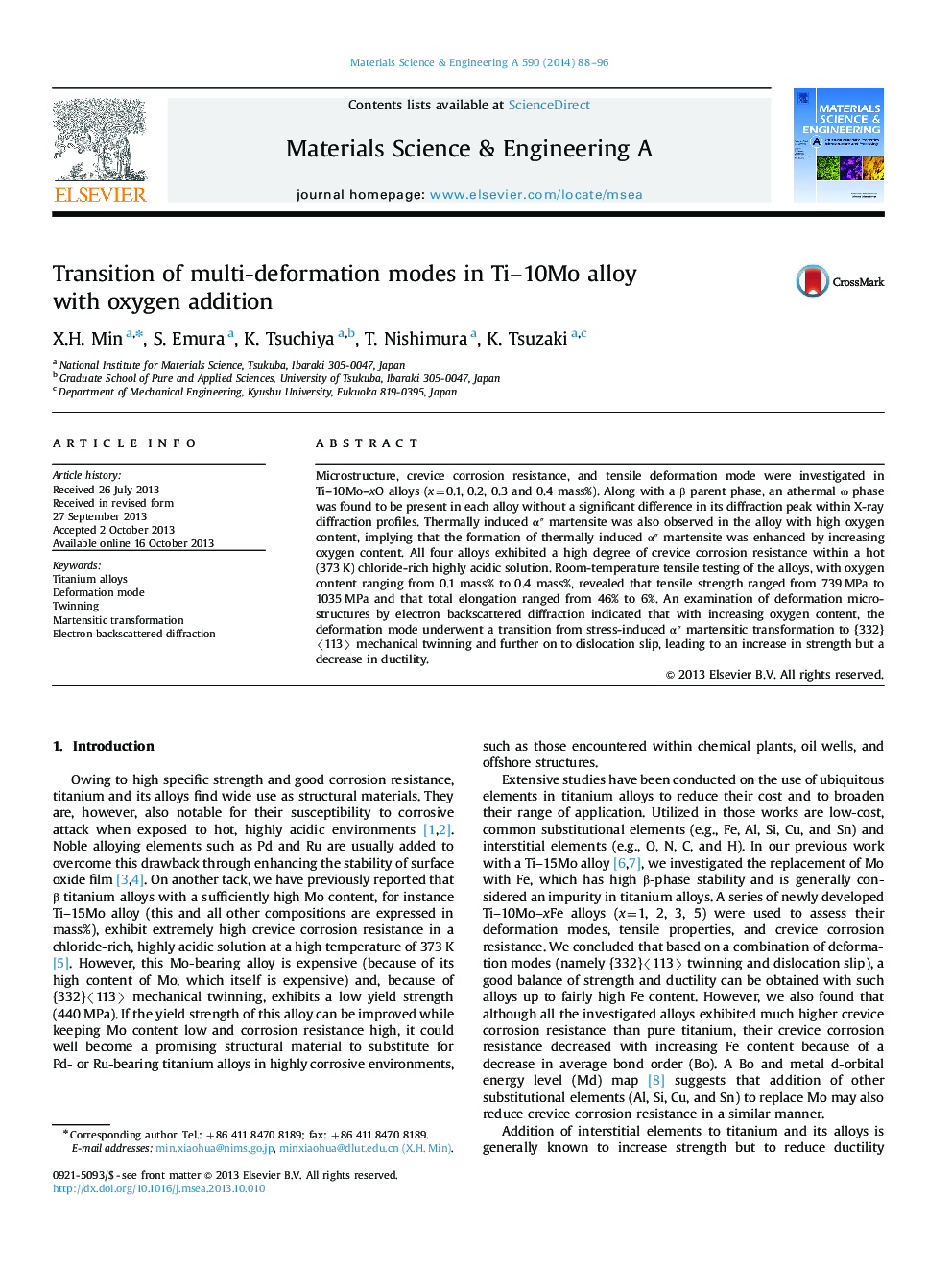| Article ID | Journal | Published Year | Pages | File Type |
|---|---|---|---|---|
| 7981723 | Materials Science and Engineering: A | 2014 | 9 Pages |
Abstract
Microstructure, crevice corrosion resistance, and tensile deformation mode were investigated in Ti-10Mo-xO alloys (x=0.1, 0.2, 0.3 and 0.4 mass%). Along with a β parent phase, an athermal Ï phase was found to be present in each alloy without a significant difference in its diffraction peak within X-ray diffraction profiles. Thermally induced αⳠmartensite was also observed in the alloy with high oxygen content, implying that the formation of thermally induced αⳠmartensite was enhanced by increasing oxygen content. All four alloys exhibited a high degree of crevice corrosion resistance within a hot (373 K) chloride-rich highly acidic solution. Room-temperature tensile testing of the alloys, with oxygen content ranging from 0.1 mass% to 0.4 mass%, revealed that tensile strength ranged from 739 MPa to 1035 MPa and that total elongation ranged from 46% to 6%. An examination of deformation microstructures by electron backscattered diffraction indicated that with increasing oxygen content, the deformation mode underwent a transition from stress-induced αⳠmartensitic transformation to {332}ã113ã mechanical twinning and further on to dislocation slip, leading to an increase in strength but a decrease in ductility.
Keywords
Related Topics
Physical Sciences and Engineering
Materials Science
Materials Science (General)
Authors
X.H. Min, S. Emura, K. Tsuchiya, T. Nishimura, K. Tsuzaki,
